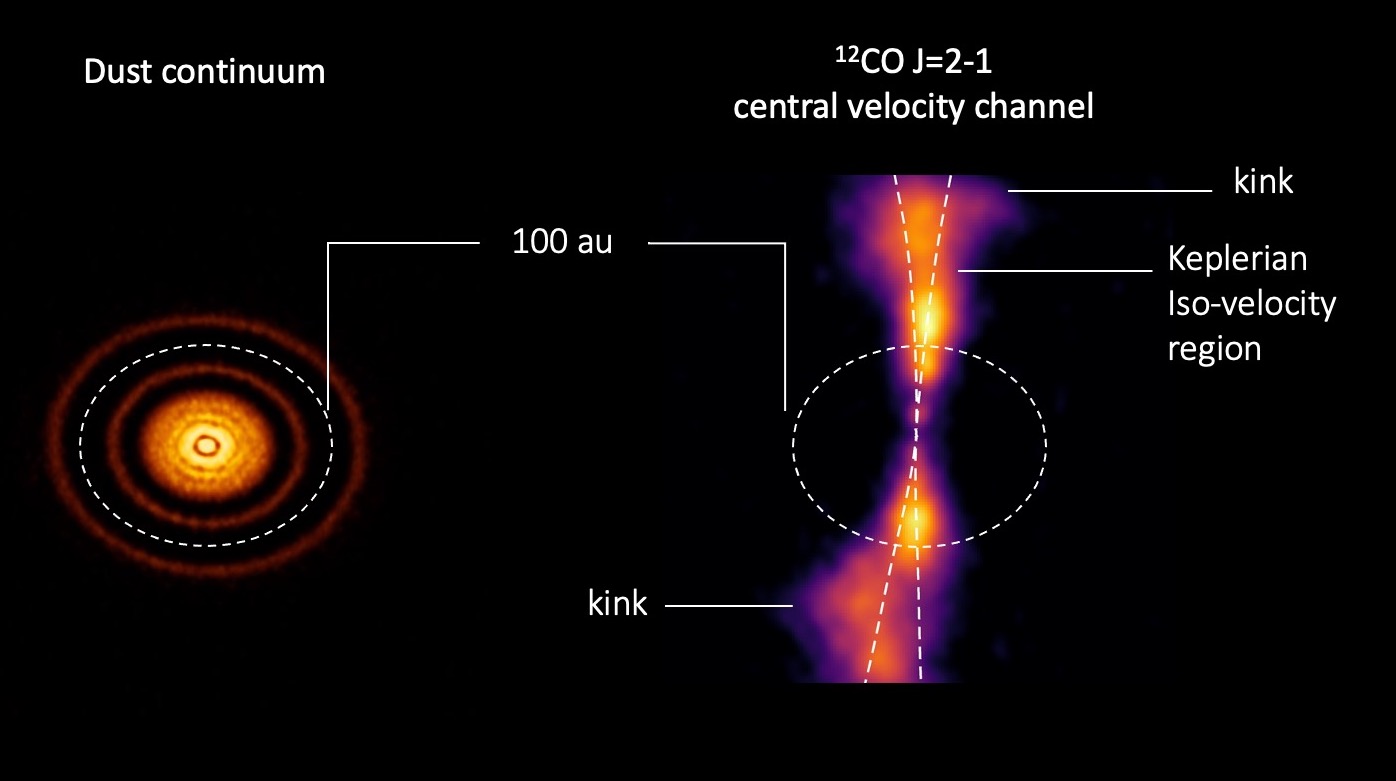
Hidden planet perturbs gas kinematics Fedele, Bollati & Lodato 2023, A&A, 672, 125
The disk around the young star AS 209 in the Ophiucus star forming regions is a laboratory of planet formation studies. Previous ALMA observations of the dust continuum revealed a series of dust gaps and rings, with a prominent gap at nearly 100 au from the star. Remarkably, follow-up ALMA observations of the gas (CO J=2-1) show a prominent deviation of the gas motion from Keplerian rotation. Such a deviation is consistent with the velocity perturbation (kink) induced by the presence of an hidden protoplanet in the 100 au dust gap
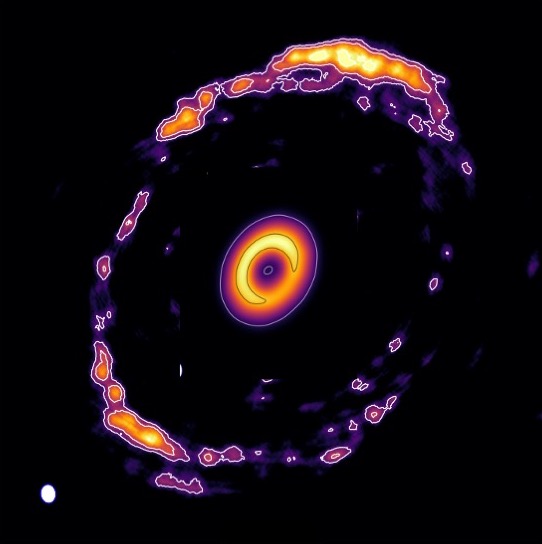
Large disk gap excavated by an embedded giant planet in HD 100546 Fedele, Toci, Maud & Lodato, 2021, A&A, 651, 90
HD 100546 is a 2.5 Solar mass pre-main-sequence star surrounded by a large and massive protoplanetary disk. ALMA observations of the dust coninuum reveal a double ring-like structure with an inner ring centered at nearly 30 au and an outer (eccentric) ring centered at 200 au. The 2 dust rings are created by the dynamical interaction of the disk with (at least) two embedded giant protoplanets. The evidence of such protoplanets challenges the standard core accretion scenario of planet formation
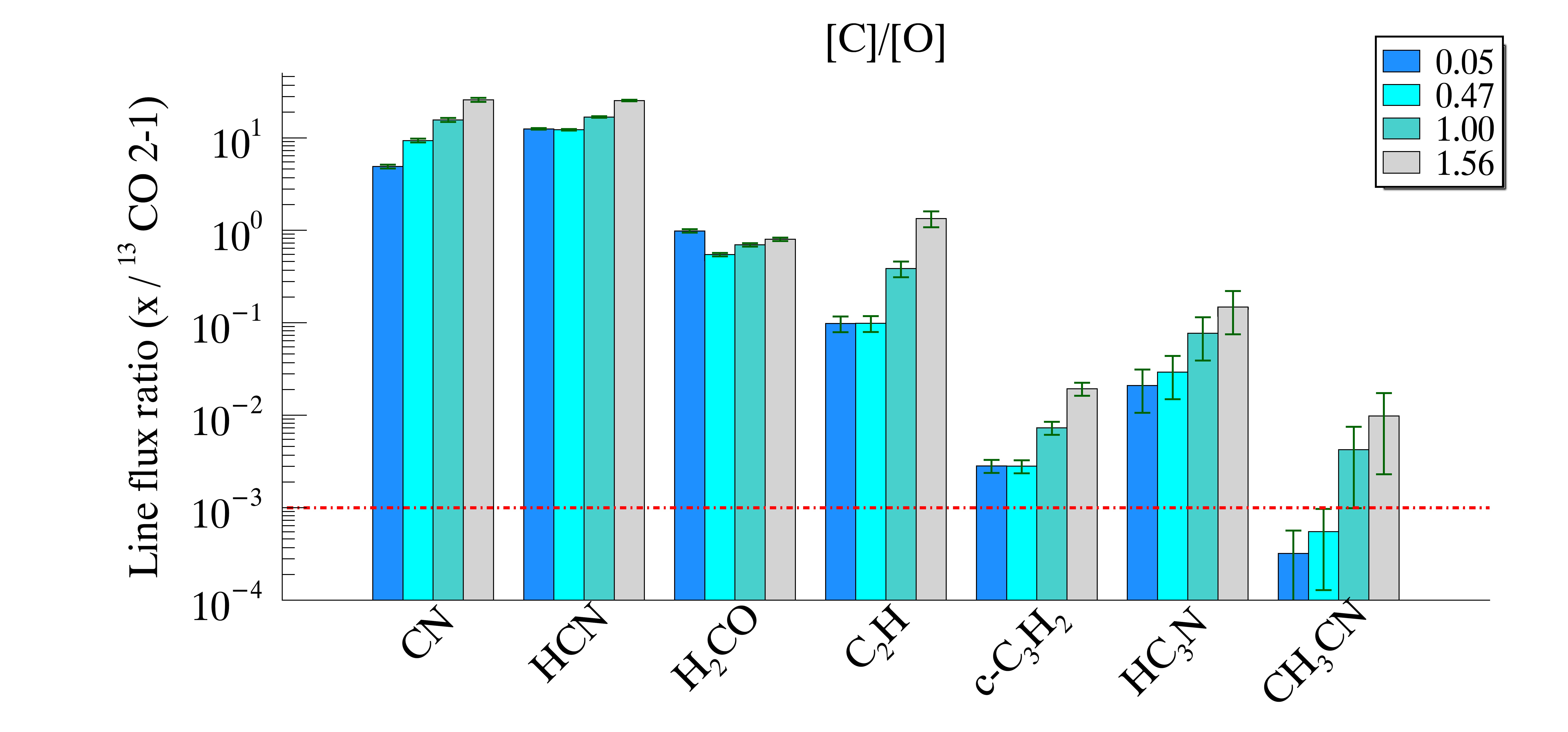
Disk molecular emission: the route to planetary atmospheresFedele & Favre 2020, A&A, 638, 110
The molecular content of protoplanetary disks serves as a reservoir for the formation of planetary atmospheres. The bulk and atmospheric composition of planets may differ substantially depending on the relative abundances of the various chemical species present in the disk during the early phases of planet formation. Recently, it has been found that the elemental abundance ratios (e.g., Carbon/Oxygen, Nitrogen/Oxygen, Sulphur/Oxygen) in disks may differ from those measured in the interstellar medium. A comprehensive molecular line surveys of multiple species is needed to measure the elemental abundance ratios in disks
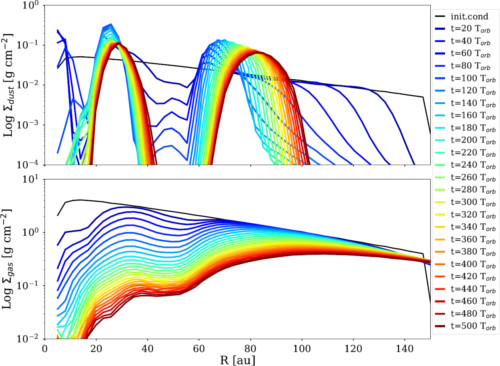
Long lived dust ringsToci, Lodato, Fedele, et al. 2020, ApJ, 888, 4
Protoplanetary disks observed with ALMA often show a charateristic multi-rings profiles intervaled by gaps of low dust density. What is the fate of these rings? Will they be destroyed by the interaction with the protoplanets? We investigated the case of HD 169142 simulating the presence of 2 giant protoplanets with the smoothed-particles-hydrodynamics code PHANTOM (Price et al. 2018). The two planets create a trap for the dust that is long-lived. Such a trap, could be the formation region of new low-mass planets
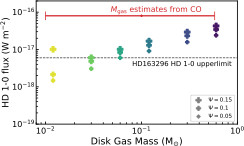
New gas mass constraints for protoplanetary disk Kama, Trampan, Fedele, et al. 2020, A&A, 634, 88
A major unknown in planet formation studies is the mass of protoplanetary disks. The line emission of molecular deuterated hydrogen (HD) can provide robust and reliable disk gas mass measurements. We re-examined a set of spectra of 15 Herbig Ae/Be disks taken with the Herschel Space Observatory. In general all disks have masses below the gravitational instability threshold. A new strong constraint is found for HD 163296 (0.067 Solar mass) implying that the gas-phase CO depletion is at most a factor of a few
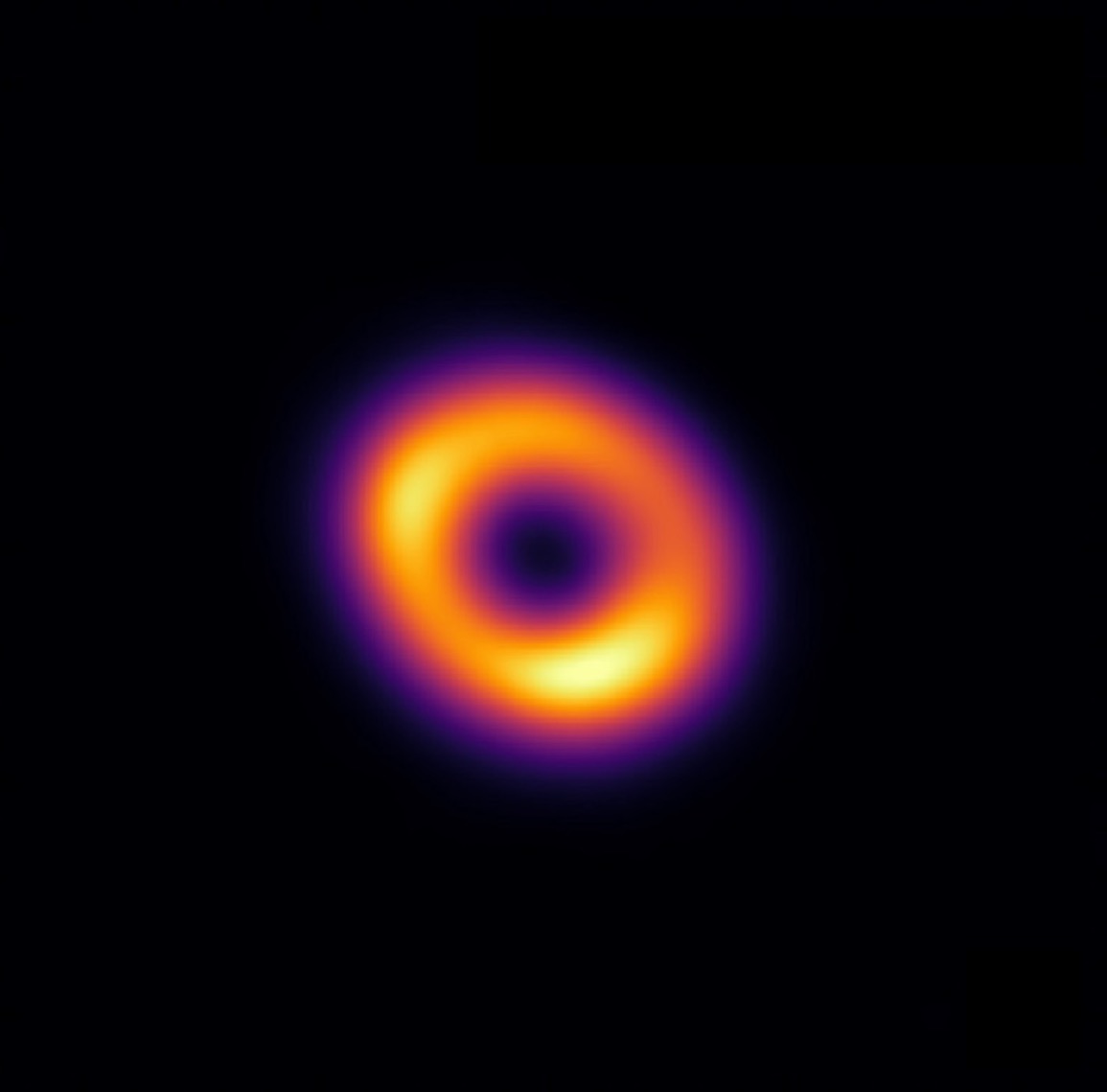
CQ Taurus, a new planetary system in the makingUbeira-Gabellini et al. MNRAS, 2019, 486, 463
Observations with the Atacama Large Millimetre Array (ALMA) of the young pre-main-sequence star CQ Tau (1.67 Solar mass) in the Taurus-Auriga star forming region reveals a large cavity in the surrounding protoplanetary disk. Such a cavity is likely produced by one or more giant proto-planets sweeping away the gas and forming a dust trap (seen as a ring in the figure on the right) extending from nearly 40 to 60 astronomical unit from the star. Is such a ring a precursor of a Kuiper belt analogue?
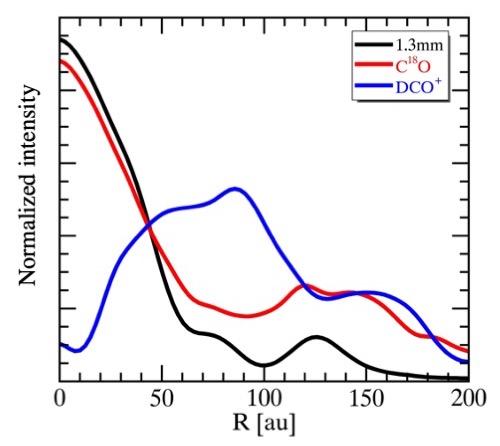
Signature of a proto-planet in the AS 209 protoplanetary diskFedele, Tazzari, Booth et al. A&A 2018, 610, 24 Favre, Fedele, Maud et al. 2019, ApJ, 871, 107
Observations with the Atacama Large Millimetre Array (ALMA) of the young pre-main-sequence star CQ Tau (1.67 Solar mass) in the Taurus-Auriga star forming region reveals a large cavity in the surrounding protoplanetary disk. Such a cavity is likely produced by one or more giant proto-planets sweeping away the gas and forming a dust trap (seen as a ring in the figure on the right) extending from nearly 40 to 60 astronomical unit from the star. Is such a ring a precursor of a Kuiper belt analogue?
Publication statistics
- 16 Main author
- 85 Co-author
- 4780 Citations
- 42 h-index
-
Full publication list